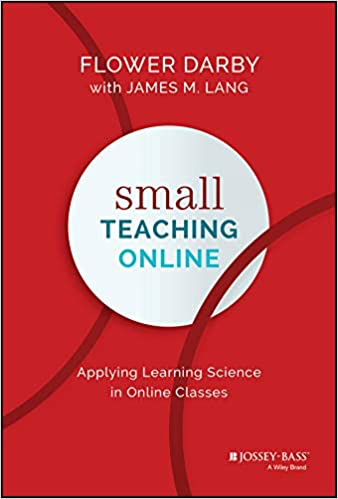Normally, the first week of class is spent building a classroom community , introducing students to the big ideas in the course, and helping them get into the rhythm of class sessions and assignments. Students get accustomed to their new class schedules and their new set of professors, syllabi, and peers. We all get over the hump of the first day jitters, iron out issues that arise, and the semester takes flight. This fall, though, settling in and establishing routines will take longer. Remote teaching is still new to many of us, and we began the semester with layers of technical difficulties that affected faculty across the country.
At the end of such a first week, it will be important to ask, is everyone with me? Thursday was the last day of add/drop, and so our rosters should stabilize now, and we can check in on whether all of our students are really on board or not. Did they log into Canvas and begin the first module? Did they do an initial assignment, survey, or quiz, like an assignment to introduce themselves on Padlet, a survey about their technology access, or a quiz to confirm that they read the syllabus?
Checking whether our students are with us is something we’ll likely need to do regularly this semester. It’s more challenging to stay connected when working remotely anyway, and additional problems that are beyond our control are bound to arise. (Zoom and Canvas going down on the first day of classes is a prime example.) We may not be able to anticipate them all, but for the ones we can anticipate, we can have a conversation with students or make a Q&A to post on Canvas. We can identify the potential issues (especially technical issues, like the internet going out) and let students know how we will handle them (or they can give us great suggestions). When issues arise that we could not anticipate, we can communicate with students as soon as we are able. For example, if Zoom goes down, we can send an announcement through Canvas (that will also be emailed):
Good morning students,
I hope you are all well and making good progress on your [project in the course]. Zoom just went down, and our class starts in just a few minutes. So it goes in our remote class this semester! Don’t worry, though, we’ll meet on MS Teams instead. Here is a link to instructions on how to use Teams. Since this is not the app we normally use, I know it might take you a little time to join the meeting. This technical snafu is beyond our control, so of course you won’t be marked late. Just join us as soon as you can, and I’ll look forward to seeing you soon, when we’ll discuss [topic] and [do an activity].
All the best,
Prof. X
The main ideas in the example above are to acknowledge the issue, assure students that it’s not their fault so they won’t be penalized, and let them know how you’ll work together to make adjustments and keep going. These might be useful things to say to ourselves, too. We are doing the best we can to teach in unmanageable circumstances. We all deserve a lot of grace.
If you’d like support in any aspect of your teaching this semester, we look forward to working with you. You can get in touch with us at pro-teaching@fsu.edu.
Fall Faculty Reading Groups
This fall, CAT is offering the following fully online faculty reading groups. Each group will meet once a week for three weeks on Zoom to discuss the books in sections. Each book will be available electronically, so it will be possible to participate from anywhere. We hope you can join us! Please register here.
Small Teaching Online: Applying Learning Science in Online Classes
Fridays: 9/18, 9/25, 10/2
10:30 a.m. – 12:00 p.m. on Zoom
 How do I make my online class interesting and interactive? How do I motivate students to keep up with the course, to engage intellectually, and to learn deeply while working remotely? In this update to James Lang’s popular book, Flower Darby applies Lang’s concept of “small teaching” to the online classroom. Faculty from across disciplines and FSU campuses are invited to join this reading and working group, in which we will explore the science of learning and discuss small but strategic changes we can make that will have a powerful influence on our students’ learning.
How do I make my online class interesting and interactive? How do I motivate students to keep up with the course, to engage intellectually, and to learn deeply while working remotely? In this update to James Lang’s popular book, Flower Darby applies Lang’s concept of “small teaching” to the online classroom. Faculty from across disciplines and FSU campuses are invited to join this reading and working group, in which we will explore the science of learning and discuss small but strategic changes we can make that will have a powerful influence on our students’ learning.
Teaching to Transgress
Wednesdays: 9/23, 9/30, 10/7
2:00 – 3:30 p.m. on Zoom
 Hooks challenges the “banking” model of learning, where education is envisioned as an accumulation of received wisdom. She argues that instead, education must be a process of empowerment and liberation, in which students learn to question, to resist, and to find their own place in a larger conversation. She asks us as educators to examine our own assumptions, biases, and privileges, so that we can better reach our students, and offer them a truly transformational education. Participants will develop strategies for putting these ideas into practice.
Hooks challenges the “banking” model of learning, where education is envisioned as an accumulation of received wisdom. She argues that instead, education must be a process of empowerment and liberation, in which students learn to question, to resist, and to find their own place in a larger conversation. She asks us as educators to examine our own assumptions, biases, and privileges, so that we can better reach our students, and offer them a truly transformational education. Participants will develop strategies for putting these ideas into practice.
How Learning Works
Thursdays: 10/8, 10/15, 10/22
2:30 – 4:00 p.m. on Zoom
 This book distills the research on cognition, translating decades of scientific literature into practical advice and introducing seven general principles of how people learn. The authors draw on cognitive, developmental, and social psychology, as well as educational research, anthropology, etc. The discussion spans issues from memory to motivation, integrating theory with real classroom examples. Participants will develop strategies for strengthening their own teaching through the application of these principles, with a focus on applying the strategies in the book to remote teaching and learning.
This book distills the research on cognition, translating decades of scientific literature into practical advice and introducing seven general principles of how people learn. The authors draw on cognitive, developmental, and social psychology, as well as educational research, anthropology, etc. The discussion spans issues from memory to motivation, integrating theory with real classroom examples. Participants will develop strategies for strengthening their own teaching through the application of these principles, with a focus on applying the strategies in the book to remote teaching and learning.



